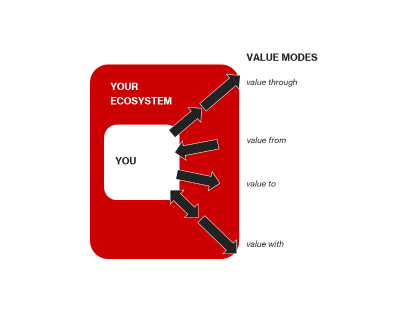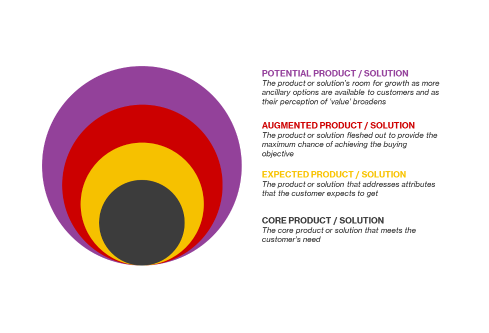The Power of Ecosystems for Sustainable Success, Part 1


Sustainable success and business longevity hinges not just on individual capabilities, but on the strength of your ecosystem. Companies like Hitachi Vantara understand that a business engine powered by collaboration is key to sustainable growth and innovation. In this two-part blog series, we will explore how we, at Hitachi Vantara, have been able to unlock new possibilities and deliver greater value to customers across our collective ecosystem by fostering a healthy network of partners, collaborators and co-innovators.
In the business world of the 21st century, companies must think of their own identity and character within the context of, and as tightly interlinked with, the identity and character of their ecosystem.
Hitachi Ltd., the parent company of Hitachi Vantara, is an excellent case in point. Here you have an industrial conglomerate juggernaut with over 100 years of history, over $57 billion in consolidated revenue across over 900 consolidated subsidiaries, equity-method associates and joint ventures, and 320,000 employees worldwide, with investments of over $2.4 billion annually in R&D, and a consistent ranking among the world’s most innovative companies. With such an impressive reach, capability set and scope of offerings, you may ask: Why does Hitachi need anyone else? Learn how we work with our technology alliance partners to bring the best of technologies together.
The truth is that the days of the “We do it all” conglomerate are past. The business world is more interconnected today than it has ever been. The pace of innovation is faster than at any other time in history. Customers are demanding an increasing amount of choice and flexibility. The set of variables that businesses need to contend with seems to keep expanding, and with it the range of uncertainty that exists. In addition, competitive pressures across industries continue to grow in intensity as businesses fight to survive and get ahead. All these factors link in no small way to the impact of technology on how we do business. In such a climate, being better, faster and stronger often comes down to a foundational question: “How strong is your ecosystem?” Or, in simpler words: “Who are your friends?”
The word ‘ecosystem’ comes from the context of natural ecologies, where living organisms interact with and influence each other and their shared environment. Organisms survive with each other and because of each other, not despite each other. The notions of competition and cooperation co-exist and collaborate to create a thriving environment.
The natural interplay among organisms provides a model for business ecosystems as well. You don’t just create value through your ecosystem, or derive value from your ecosystem; rather, you also seek to create value with and deliver value to your ecosystem. If you are able to work across all of these ‘value modes’, well, you all benefit, you all thrive, and you all hopefully make the environment and the industry stronger.

Figure 1: Ecosystem Value Modes
Leading enterprises know that to compete and prosper long term, they need a thriving ecosystem. Per an IDC survey of 1,288 executives, improving end-customer engagement is a primary driver of industry ecosystems. Although, you are not merely serving the end users of your products and services, but also a broad set of stakeholders that includes upstream and downstream customers, partners, and your entire value chain.
Geoffrey Moore’s seminal book, “Crossing the Chasm”, popularized the idea of the “Whole Product”, building on prior work by Theodore Levitt and Regis McKenna. This is summarized by Figure 2 below. Moore explains that businesses are most effective when they address the “whole product” or solution, going beyond the core solution and even beyond what customers expect, to address the broader scope of customer-oriented value, and in doing so, to maximize the chance of achieving the buying objective.
This is related to the notion of Systems Thinking, the discipline of looking beyond immediate issues to instead consider how all the piece parts come together in the most meaningful and effective way to make the whole. The “system” is like a machine with many gears of varying shapes and sizes, all of which need to align and turn together in order for the larger whole to work as desired.
The implication for the importance of ecosystems is clear to see. How many companies can fully address all aspects of value that can be brought to customers, even when domain boundaries are narrowed? End-to-end vertical integration is an admirable goal, and many large companies still attempt to achieve this. However, in the face of factors such as those called out earlier, including the pace of change and customer demand for flexibility, the modern key to success is the ability to effectively build and harness the right ecosystem. Build / Buy / Partner strategies that sufficiently emphasize the ‘Partner’ are the ones best geared towards success.

Figure 2: The Whole Solution Approach (Adapted from Geoffrey Moore’s approach.)
Evidence of the power of ecosystems is all around us. Probably the most widely discussed is Apple’s success with building an ecosystem that integrates hardware, software, services and media across a host of end-user and enabling personas. Apple still makes more than 50% of its revenues from the iPhone, and 80% of its revenues from its products. But, unarguably, the stickiness of revenue even with these products links directly to the powerful ecosystem built around them, and to what the group is able to offer customers as a collective.
Or consider the evolution of the telematics and in-vehicle infotainment industry. Automotive Original Equipment Manufacturers (OEMs) had to build a whole new ecosystem in order to integrate the new technologies, services and experiences into vehicles and the value chain: from software providers to telecom service providers, consumption model enablers, media companies, and aftermarket service providers. They had to reconfigure their existing value chain around these new ecosystem players. Attempts to scale homegrown technologies ran into predictable challenges, and the Auto OEMs were working well outside of their core. The power struggle for many years revolved around the question of who owned the customer and the customer’s data. Inevitably, the industry converged around the Apple CarPlay and Android Auto platforms, mainly because the ecosystem-driven experiences and integrations that they enabled were the best way to deliver what the customer actually wanted. The result was a win-win: all players actually ended up with improved offerings and stronger customer relationships.
This ends Part 1 of our blog on Ecosystem Collaboration for Sustainable Business Growth. In Part 2, we will showcase some noteworthy examples of Hitachi Vantara’s ecosystem philosophy and highlight the importance of cultivation and commitment in driving sustainable growth via such an ecosystem.
Read about our latest Collaboration with NVIDIA to Create New Portfolio of Industrial AI Solutions.

Simon Ninan is Senior Vice President of Business Strategy, Hitachi Vantara